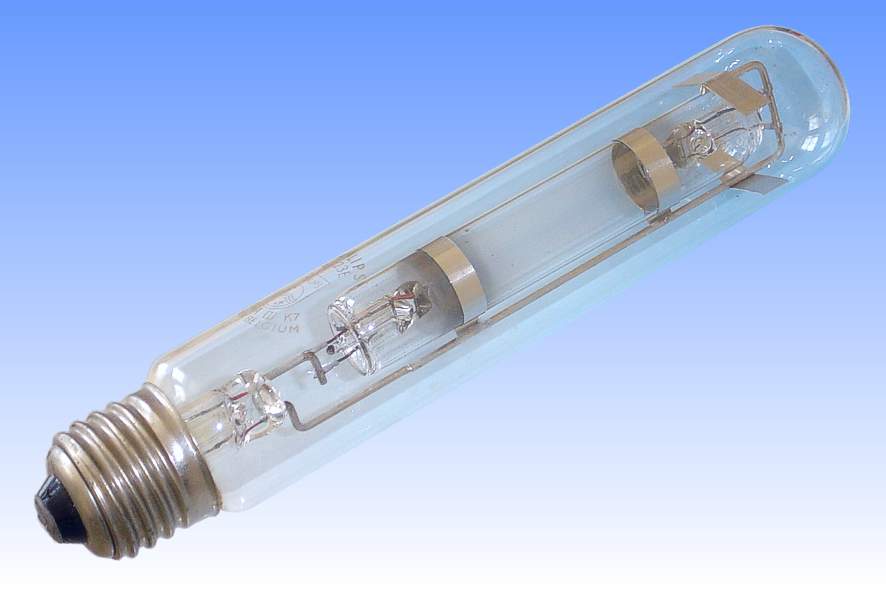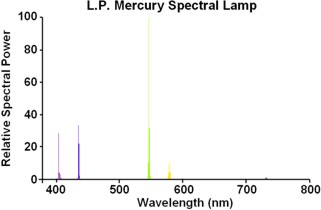
|
Spectral Lamp - Bivalent Metal - LP Mercury |

Five lamps make up the group containing Bivalent Metals in the Philips series. These are Mercury (both high and low pressure), Cadmium, Zinc, and a mixed lamp containing all three elements. The low pressure mercury lamp is similar lines to the noble gas family. The rest of this group is characterised by a higher vapour pressure of the metal dose, achieved with compact arc tube of high wattage.
The electrodes and arc tubes resemble those found in low wattage mercury discharge lamps. It is standard practice to form narrow diameter quartz diaphragms just in front of each electrode, to constrain the arc along the central axis of the tube without wandering and flickering. Heat-reflective coatings of platinum paint are applied behind the electrodes to further raise the vapour pressure of the metals. The arc tube of the zinc lamp is further stretched into a capillary at its centre to raise the intensity of the discharge. Seals were originally formed to tungsten rods, as in the first mercury lamps but in later models the standard pinch-seal technique is employed. Outer bulbs are fabricated in hard glass to withstand the heat, or quartz if UV transmission is required.
| Manufacturer: | Philips Lighting - Item No. 93123E | |
| Lamp Power: | 12 Watts | |
| Lamp Current: | 0.9 Amps | |
| Lamp Voltage: | 14 Volts | 400V Ignition |
| Cap: | E27s/27 | Ni plated brass |
| Bulb Finish: | Clear | Borosilicate |
| Bulb Type: | T-32 | |
| Overall Length: | 183 mm | |
| Light Centre Length: | 110 mm | |
| Electrodes: | Beehive coil of black tungsten with BCT emitter | |
| Inner / Outer Atmosphere: | Inner: Mercury, Argon | Outer: Nitrogen |
| Luminous Flux: | 75 lumens | |
| Luminous Efficacy: | 6 lm/W | |
| Colour Temperature & CRI: | CCT: 7,000K | CRI: Ra 1.5 |
| Chromaticity Co-ordinates: | CCx: 0.277 | CCy: 0.450 |
| Burning Position: | Vertical cap down | |
| Rated Life: | Not published | |
| Warm Up / Re-strike Time: | 15 minutes | Instantaneous |
| Factory: | Turnhout, Belgium | |
| Date of Manufacture: | October 1987 | |
| Original / Present Value: | Unknown | |
